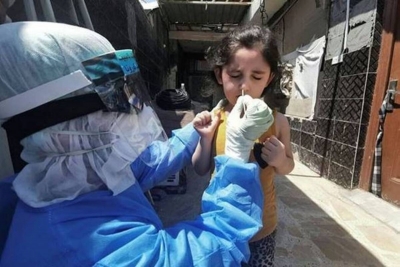What is Nipah and how does it spread?
Kerala was on high alert after a 12-year-old boy died of the deadly Nipah virus in Kozhikode, early this month. The State ramped up efforts to stop a potential outbreak, as health officials began to trace contacts and isolate hundreds of people who came into contact with the boy.
The virus has an estimated fatality rate of between 40% and 75%, according to the World Health Organisation (WHO), making it deadlier than the coronavirus.
The state dealt with Nipah in 2018, when more than a dozen people died from the virus. This time around, the concern is compounded by the fact that the state has grabbed national headlines in recent weeks for seeing the highest number of daily COVID-19 cases across India.
Nipah is a rare viral infection. Infected patients show symptoms of fever and respiratory problems in the early stages that quickly advance to fatal encephalitis (inflammation of the brain). Fruit bats or flying foxes of the Pteropodidae family are the natural host of the Nipah virus.
The WHO has listed Nipah as among the 10 priority pathogens requiring urgent research. The organisation takes into consideration the virus' ability to trigger lethal outbreaks and the non-availability of drugs against it.
What is Nipah?
Nipah is a zoonotic disease (zoonotic is a disease transmitted to humans from animals), spread by bats, pigs and infected people, according to the WHO. Outbreaks have been reported in Southeast Asia since 1998, when the virus was first identified in Malaysia. The 1998-99 outbreak spread from pigs to humans in Malaysia. It caused severe respiratory illness in pigs and encephalitic disease in humans. It killed 100 people and affected thousands of pigs. The Nipah virus has a mortality rate of 75%, according to the WHO.
How does it spread?
Fruit bats, the natural host of the Nipah virus, show no signs of infection. However, the virus spreads through the bats saliva or excreta. Humans and animals such as pigs become infected through contact or ingestion of materials contaminated with saliva or urine of such bats. In 2004, in Bangladesh, humans became infected after consuming date palm sap that had been contaminated by infected fruit bats. Humans also get affected when they come in contact with infected pigs or when they consume the meat of the animal. Human-to-human transmission happens through body fluids, including nasal or respiratory droplets, urine, or blood. Such transmission was recorded in Siliguri, West Bengal, in 2001, and in the 2018 outbreak in Kerala. In Siliguri, 75% of cases occurred among hospital staff or visitors.
What are the symptoms?
Symptoms typically present one to two weeks after exposure to the virus. Initial symptoms are flu-like. They include fever, headache, respiratory problems and muscle pain. This may be followed by neurological signs such as disorientation and dizziness. In severe cases, the infection can cause encephalitis, which is the inflammation of the brain, and eventually death. Survivors can have long-term neurological issues such as a seizure disorder or personality changes, according to the WHO.
What can be done to diagnose it?
According to the U.S. Centers for Disease Control and Prevention (CDC), during the early stages of the illness, laboratory testing can be conducted using real-time polymerase chain reaction (RT-PCR) from throat and nasal swabs, cerebrospinal fluid, urine, and blood. Later in the course of illness and after recovery, testing for antibodies is conducted using an enzyme-linked immunosorbent assay (ELISA).
What is the treatment?
There are no drugs or vaccine available against Nipah. The primary treatment is supportive care. Rest, hydration, and treatment of symptoms are advised. Individuals infected need to be hospitalised and isolated to avoid spread of disease to others. Identifying potential victims, testing them and treating them as early as possible are the way forward.
What should you do to protect yourself from Nipah?
- Avoid exposure to animals such as bats and pigs.
- Avoid eating fruits bitten by bats or that may have been contaminated by them.
- Avoid contact with infected people.
- Maintain personal hygiene. Practise handwashing regularly with soap and water.
- Consume only well-cooked, home-made food.
- Spread awareness among your friends and family members.
Picture Credit : Google
